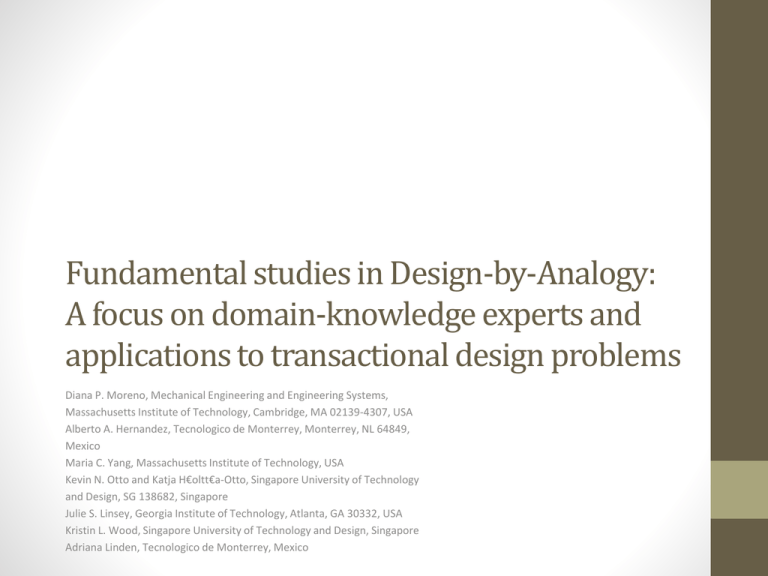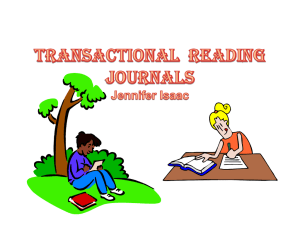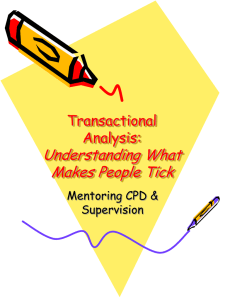Fundamental studies in Design-by-Analogy: A focus on
advertisement

Fundamental studies in Design-by-Analogy: A focus on domain-knowledge experts and applications to transactional design problems Diana P. Moreno, Mechanical Engineering and Engineering Systems, Massachusetts Institute of Technology, Cambridge, MA 02139-4307, USA Alberto A. Hernandez, Tecnologico de Monterrey, Monterrey, NL 64849, Mexico Maria C. Yang, Massachusetts Institute of Technology, USA Kevin N. Otto and Katja H€oltt€a-Otto, Singapore University of Technology and Design, SG 138682, Singapore Julie S. Linsey, Georgia Institute of Technology, Atlanta, GA 30332, USA Kristin L. Wood, Singapore University of Technology and Design, Singapore Adriana Linden, Tecnologico de Monterrey, Mexico Agenda • • • • Introduction Experiment Results Implication Introduction • Analogy is the process of association between situations from one domain (source) to another (target) made possible through the establishment of relations or representations • Designers now face design problems not only in physical systems but transactional as well. This study expands our understanding of design practitioners’ cognitive processes by exploring the development of innovative solutions for transactional problems using a DbA approach. Design-by-Analogy methods • A range of DbA methods have been developed, and their sources of analogous inspirations vary form answering direct questions that allow exploration of analogical categories as in Synectics (Gordon, 1961), taking inspiration from the natural world. • Recent advancements in Design-by-Analogy ideation methods also include the development of analogical search approaches and search engines to identify potential analogies from digital sources, databases, and repositories Semantic memory retrieval • Semantic memory refers to the organization accumulation of meaningful information, and in cognitive psychological literature, is often conceptualized as a network of concepts that are associated with each other, such as through categories WordTree Design-by-Analogy method • The first step of the method consists of identifying ‘key problem descriptors. KPDs can be a design problem’s key functions, customer needs, user activities, and clarifying descriptions. • The next step is developing alternative problem statements • The last step consists of an individual group idea generation where identified results (analogies, patents, analogous domains and problem statements) are used to refine and develop concept solutions, inspired both from the experience set and long-term memory of the designer(s) and the identification and research of analogies outside this experience set such as troponyms from the WordTree diagram. Divergent Tree Method • Extentics (Cai, Yang, & Lin, 2003), was developed as a method to solve contradictory problems using fuzzy sets extension methods such as the Divergent Tree Method. • The method intends to expand original solution domain by using divergence. Experiment • Building from the literature foundation in Section 1, a set of experiments with groups of domain-knowledge experts in transactional problems from 22 product and 14 service companies was conducted in Mexico, to understand the influence of a word-based ideation method on transactional design problems. • The word-based ideation method is a combination of the WordTree and Divergent Tree Methods. The experiments consider a transactional design problem and focus on innovative solution generation. Experiment Experiment execution diagram Quantity of ideation • Some definitions and procedures to calculate quantity of concepts have been developed in the domain of engineering design (Bouchard & Hare, 1970;Dean, Hender, Rodgers, & Santanen, 2006; Linsey et al., 2011; Oman et al., 2013; Shah et al., 2003). Fixation • Jansson and Smith (1991) define design fixation as ‘a blind adherence to a setof ideas or concepts limiting the output of conceptual design.’ Novelty • Novelty provides a measure of the uniqueness or originality of a given solutionwhen contrasted/compared with others in the design space of possible solutions. Qualitative approach for evaluating quality • The qualitative analysis for evaluating quality of the generated solutions is presented in Figure 10, where the first and third column present solutions developed and presented as innovations by leading banking corporations (Citigroup Inc., 2006, 2011; Westpac Banking Corporation, 2012). The middle column and arrows represent a mapping from the bin-ideas developed in the study. Qualitative approach for evaluating quality Implication • This experiment explores the important area of innovation processes and idea generation for transactional problems. Previous research shows the effectiveness and robustness of idea generation methods in engineering artifact fields (manufacture, products and tangible objects), but there exists significant opportunities for the adaptation of these techniques to transactional problems.











